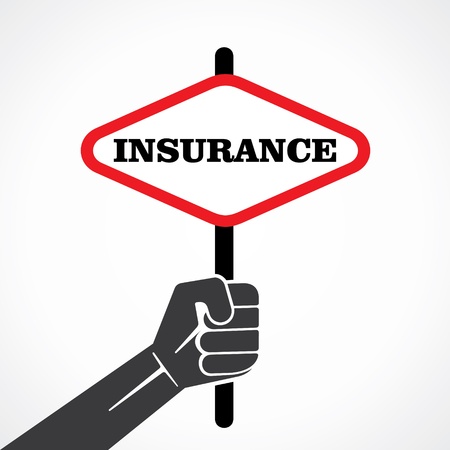Why Travel Insurance Is Essential for Americans Abroad
Traveling internationally is exciting, but it also comes with unique risks and challenges, especially for Americans. Many U.S. travelers assume that their regular health insurance will cover them abroad, but thats rarely the case. Here’s why having travel insurance should be at the top of your checklist before heading overseas.
Common Risks Faced by American Travelers
No matter how well you plan, unexpected events can happen while youre abroad. From lost luggage to sudden illness or trip cancellations, travel insurance helps you handle these situations without stress.
| Risk | How Travel Insurance Helps |
|---|---|
| Medical Emergencies | Covers hospital visits, ambulance fees, and sometimes emergency evacuation. |
| Trip Cancellation | Reimburses prepaid, non-refundable expenses if you need to cancel for a covered reason. |
| Lost or Delayed Baggage | Pays for essential items and helps recover your belongings. |
| Theft or Loss of Valuables | Offers compensation for stolen passports, electronics, or money. |
| Travel Delays | Covers extra hotel stays and meals during long delays. |
The High Cost of Medical Care Abroad
If you get sick or injured while traveling internationally, medical costs can add up quickly—sometimes reaching thousands or even tens of thousands of dollars. Most U.S. health plans don’t provide coverage outside the United States, leaving you to pay out-of-pocket. Travel insurance bridges this gap and can even arrange medical evacuations back to the U.S. if needed.
Sample Comparison: Medical Costs Without vs. With Insurance
| Scenario | Without Insurance (Estimated Cost) | With Travel Insurance (Your Cost) |
|---|---|---|
| Hospitalization in Europe for 1 week | $10,000+ | $0 – $250 deductible* |
| Emergency Evacuation from Asia to U.S. | $50,000+ | $0 – $250 deductible* |
| Doctor Visit Abroad | $100 – $300 per visit | $0 – $50 copay* |
*Actual costs depend on policy details.
Packing Peace of Mind for Your Trip
Having travel insurance means you’re not alone when things go wrong in another country. You have access to 24/7 support hotlines, help finding local doctors, assistance replacing lost passports, and financial protection if something disrupts your plans. It’s about protecting your investment in your trip—and yourself—so you can focus on making memories instead of worrying about what might go wrong.
2. What Does Travel Insurance Typically Cover?
When planning an international trip, it’s essential for American travelers to understand what travel insurance usually covers. Travel insurance can save you money, time, and a lot of stress if things don’t go as planned. Here’s a breakdown of the most common coverage options you’ll find in most travel insurance policies, with examples that are especially relevant to travelers from the United States.
Standard Coverage Options
| Coverage Type | What It Means | Example for Americans |
|---|---|---|
| Trip Cancellation | Reimburses you if you have to cancel your trip before departure due to covered reasons (like illness, family emergency, or severe weather). | You book a cruise to the Caribbean but have to cancel last-minute because of a sudden illness or hurricane warning. |
| Medical Emergencies | Covers medical expenses if you get sick or injured while traveling abroad, where your regular health insurance may not apply. | You break your leg while hiking in Switzerland and need hospital care—your U.S. health plan likely doesn’t cover this overseas. |
| Lost or Delayed Luggage | Pays for lost, stolen, or delayed luggage and personal belongings during your trip. | Your checked bag gets lost on a connecting flight to Paris. Insurance reimburses you for essentials like clothes and toiletries. |
| Travel Delays | Covers additional expenses if your flight is delayed for a certain number of hours due to reasons like weather or mechanical issues. | Your flight from New York to London is delayed overnight. Insurance helps pay for meals and a hotel stay until you can depart. |
Optional Add-Ons (Upgrades)
Many insurers offer extra coverage options that can be added for an additional cost. Some popular add-ons include:
- Cancel For Any Reason (CFAR): Lets you cancel your trip for reasons not listed in standard coverage (great flexibility, but higher premium).
- Adventure Sports Coverage: Covers risky activities like skiing, scuba diving, or zip-lining—important if your trip includes these activities.
- Rental Car Protection: Covers damage or theft of rental vehicles abroad, since many U.S. auto policies don’t extend overseas.
Important Note for Americans
Most U.S. health insurance plans (including Medicare) do not provide coverage outside the United States. That’s why medical emergency coverage is one of the most important benefits when traveling internationally.

3. How to Choose the Right Policy for Your Trip
Understanding Your Travel Needs
Before you buy travel insurance, its important to know what kind of coverage fits your trip best. Every American traveler is different—your destination, personal health, and planned activities all play a part in the policy you should pick.
Key Factors to Consider
Your Destination
Certain countries may require specific types of coverage or have higher medical costs. For example, if youre headed to Europe, look for policies that meet Schengen visa requirements. Traveling somewhere remote? Make sure emergency evacuation is included.
Your Health Needs
If you have pre-existing conditions, check if theyre covered. Some policies offer waivers for pre-existing medical conditions if you purchase the plan soon after making your first trip deposit.
Adventure and Activities
If your trip includes skiing, scuba diving, or hiking, standard travel insurance might not cover accidents related to these activities. Look for add-ons or specialized adventure sports coverage.
The Current Global Landscape
Events like pandemics, political unrest, or natural disasters can impact your travel plans. Policies now often include (or specifically exclude) COVID-19 coverage and other global events—read the fine print!
Comparing Travel Insurance Plans
To make things simple, heres a table comparing the main features you should look at:
| Feature | Why It Matters | Questions to Ask |
|---|---|---|
| Medical Coverage Limit | Pays for unexpected illnesses or injuries abroad | Is the limit enough for my destination? |
| Trip Cancellation/Interruption | Covers non-refundable costs if you cancel or cut your trip short | What reasons are covered? |
| Baggage Loss/Delay | Helps replace lost or delayed luggage and essentials | What’s the maximum payout? |
| Emergency Evacuation | Covers transport to the nearest hospital or back home in an emergency | Is my activity/location covered? |
| Pre-existing Condition Waiver | Makes sure your health issues are covered | Do I qualify for a waiver? |
| Pandemic/COVID-19 Coverage | Covers cancellations, quarantines, or medical care due to COVID-19 | What scenarios are covered/excluded? |
| Adventure Sports Rider | Covers injuries from adventure activities not included in basic plans | Are my planned activities listed? |
Tips for Evaluating Travel Insurance Plans
- Read reviews from other American travelers about their claim experiences.
- Compare policy prices and benefits side by side—not just the cheapest option.
- Call customer service with questions—good support is crucial if something goes wrong abroad.
- Check if you already have some coverage through your credit card or employer benefits before buying extra insurance.
- Make sure your insurer has a 24/7 emergency assistance line with English-speaking support.
Your Checklist Before Buying:
- I know what’s required by my destination country.
- I’ve checked coverage limits for medical emergencies and evacuation.
- I’ve made sure my health needs and planned activities are covered.
- I understand what’s excluded—especially for pandemics and civil unrest.
- I have contact info for my insurer saved in my phone and printed out.
This step-by-step approach will help ensure you pick a travel insurance policy that truly protects you on your next international adventure.
4. Understanding Exclusions and Fine Print
Travel insurance can be a lifesaver, but only if you know what’s actually covered—and what’s not. Many American travelers get caught off guard by the fine print in their policy. Understanding exclusions is key to making sure you don’t end up with unexpected bills or denied claims when you need help the most.
Why Reading the Fine Print Matters
It’s easy to skim through your policy documents, but every travel insurance plan has specific situations it won’t cover. These “exclusions” are just as important as the benefits. If you’re not aware of them, you might assume you’re protected when you’re not.
Common Exclusions You Should Know About
Here are some of the most common exclusions found in travel insurance policies:
| Exclusion | What It Means | Typical Example |
|---|---|---|
| Pre-existing Conditions | No coverage for medical issues you had before buying the policy (unless a waiver is included) | If you have diabetes and need treatment abroad, this might not be covered |
| Hazardous Activities | No coverage for injuries during risky sports or adventures unless specifically added | Skiing, scuba diving, or bungee jumping may not be covered by default |
| Pandemic/Epidemic Events | Some plans exclude cancellations or medical costs related to pandemics like COVID-19 | If your trip is canceled due to a government travel ban, your claim might be denied |
| Alcohol/Drug-Related Incidents | No coverage for accidents or injuries that happen while under the influence | If you’re hurt after drinking too much at a resort, insurance might not pay out |
| Unapproved Destinations | No coverage if you visit countries on a government “do not travel” list | If you travel to a country with active conflict against U.S. advice, claims may be rejected |
How to Read Your Policy Like a Pro
- Look for an “Exclusions” Section: This part lists everything that isn’t covered. Don’t skip it!
- Check for Definitions: Insurers use specific language; find the glossary or definitions page to understand terms like “pre-existing condition.”
- Ask Questions: If something isn’t clear, reach out to customer support before buying.
- Review Waivers: Some insurers offer waivers for pre-existing conditions or hazardous activities—these can make a big difference.
- Watch for Pandemic Policies: Since COVID-19, many plans now mention pandemic-related rules—read these carefully if that’s a concern.
Quick Tips for American Travelers
- Don’t assume all policies are alike.
- If you have health concerns, ask about pre-existing condition waivers.
- If you plan adventurous activities, confirm they’re covered or add extra protection.
- If traveling during uncertain times (like pandemics), check what’s included and excluded in case of new outbreaks.
The Bottom Line on Exclusions and Fine Print
The best way to avoid unpleasant surprises is to read every part of your policy and ask questions when in doubt. Knowing exactly what’s excluded helps ensure your next international trip goes smoothly—even if things don’t go as planned.
5. How to File a Claim and Get Help When You Need It
Step-by-Step Guide to Filing a Travel Insurance Claim
Navigating the claims process for travel insurance doesn’t have to be overwhelming. Here’s how American travelers can quickly and efficiently file a claim if something goes wrong during an international trip.
Step 1: Gather Your Documents
Before you start your claim, collect all necessary documents. This will help speed up the process and avoid delays.
| Type of Claim | Documents Needed |
|---|---|
| Medical | Doctor’s report, hospital bills, proof of payment, prescription receipts, policy details |
| Trip Cancellation/Interruption | Proof of reason (doctor’s note, death certificate, etc.), receipts for non-refundable expenses, airline or hotel cancellation confirmation |
| Baggage Loss/Theft | Police report, property irregularity report from airline, list of lost items with value, receipts if available |
| Travel Delay | Written confirmation from airline or carrier about delay, receipts for additional expenses (meals, hotel) |
Step 2: Notify Your Insurer as Soon as Possible
Contact your insurance provider immediately after an incident. Most U.S.-based insurers offer 24/7 emergency hotlines—keep this number handy in your phone and travel documents.
Tip:
- If abroad, use the international dialing code provided by your insurer.
- If you need medical assistance, ask the provider to contact your insurer directly before treatment if possible.
Step 3: Submit Your Claim Online or by Phone
Most major American travel insurance companies let you file claims online via their website or mobile app. Alternatively, you can call their customer service line for help. Be sure to provide all requested documentation and double-check that your forms are complete.
Step 4: Track Your Claim Status
After submitting, you can usually track the status of your claim through the insurer’s online portal or by calling customer service. Keep an eye out for emails or messages requesting additional information.
Getting Help While Abroad
- Emergency Assistance: Many policies include access to a 24-hour global helpline for emergencies like medical evacuation or lost passports. Save this number before you leave home.
- Local Resources: Ask your insurer about local hospitals or clinics that accept direct billing so you don’t have to pay out-of-pocket and wait for reimbursement.
- U.S. Embassy: If you lose important documents or face legal trouble, contact the nearest U.S. Embassy—they can work with your insurer to help resolve issues.
Troubleshooting Common Issues
| Problem Encountered | What To Do Next |
|---|---|
| No Response from Insurer | Email customer support and follow up with a phone call; keep records of all communications. |
| Claim Denied | Review the denial letter for reasons; gather any missing documents; appeal the decision if you believe it was incorrect. |
| Payout Delays | Check if any information is missing; confirm bank details; ask for estimated processing time. |
Your Quick Checklist Before You Go:
- Add your insurer’s emergency contact info to your phone contacts.
- Keeps scans/photos of your policy and important documents in cloud storage.
- If traveling to remote areas, check in advance which hospitals are covered under your plan.
- If unsure about coverage or procedures, call your insurer before departure for clarification.
By following these steps and being prepared, you’ll make sure you get timely assistance and reimbursement if anything unexpected happens during your travels abroad.


